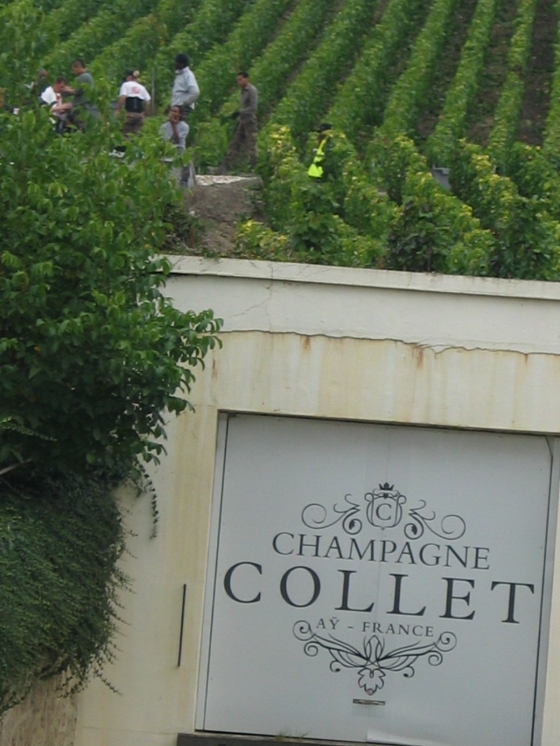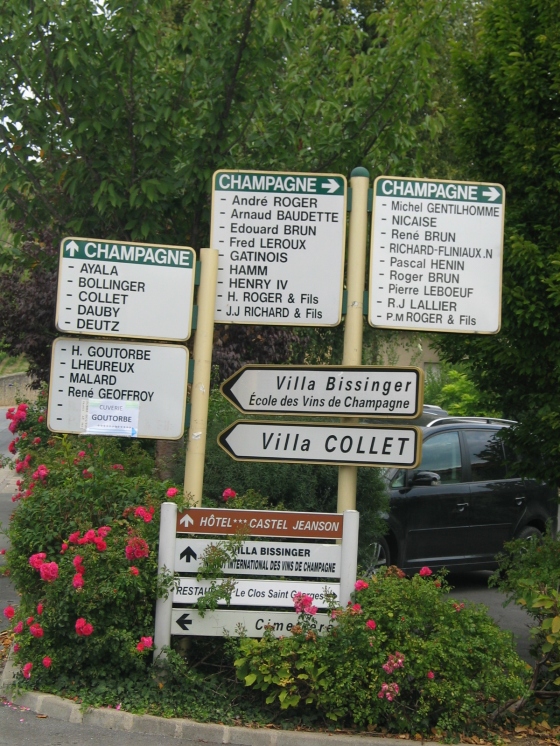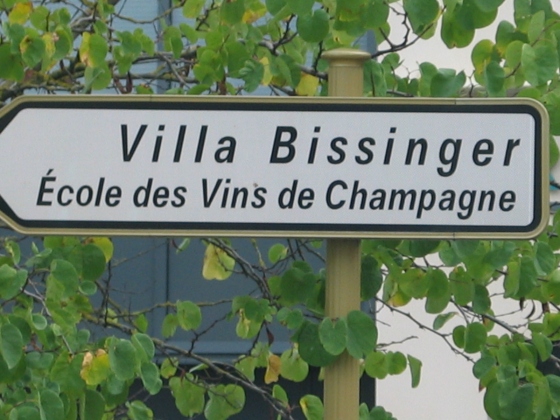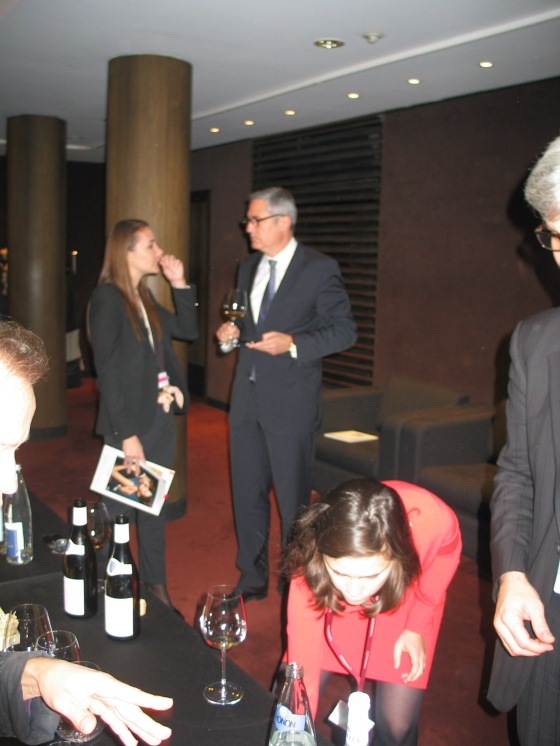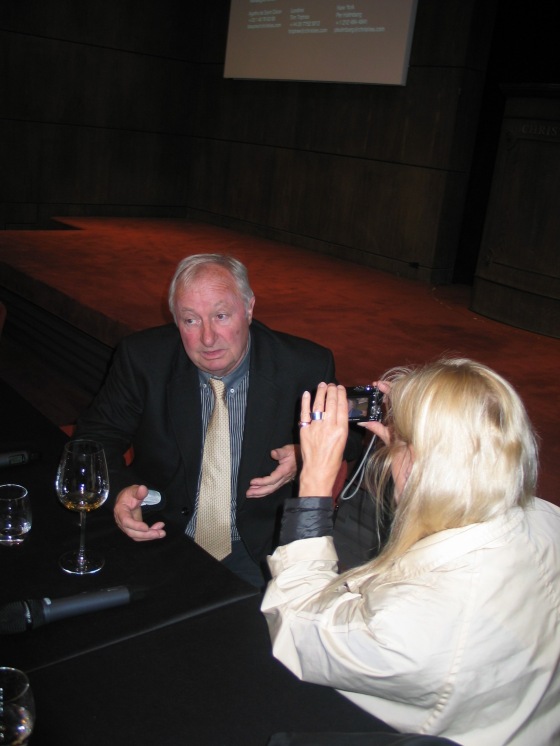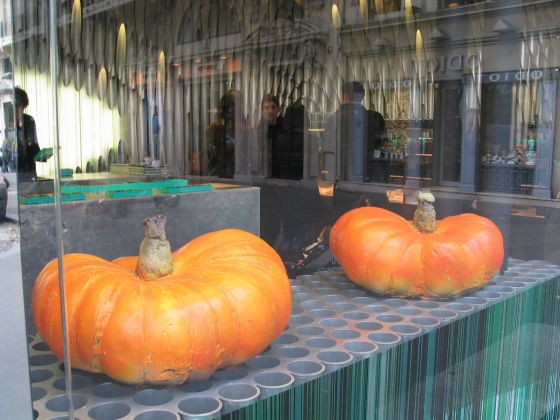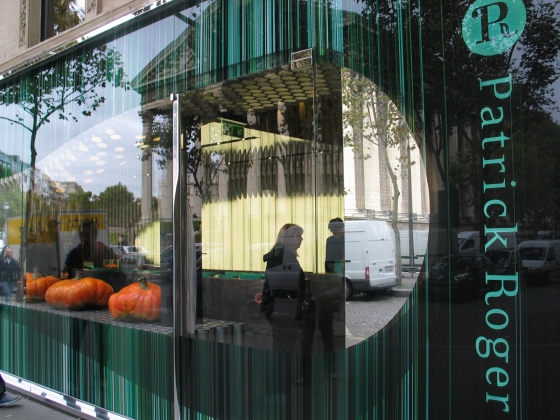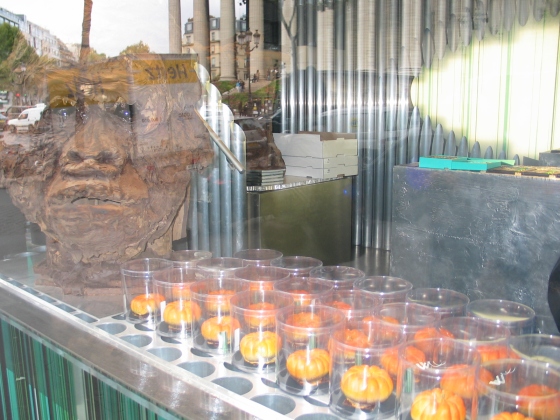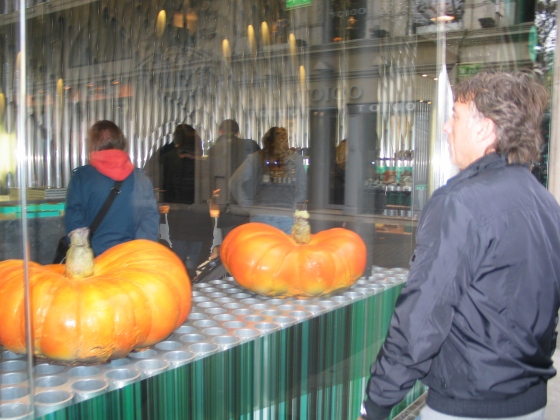by Paige Donner
All photos copyright Paige Donner 2013 All Rights Reserved
Paige is the host of World of Wine radio program on WorldRadioParis.
Planning a trip through Champagne during harvest time might at first feel like mission impossible, but if you use a few basic principles by which to plan your itinerary it can be more gratifying than imagined being at the center of all the harvest action. Certainly it's guaranteed to be visually and sensorially rewarding.
First thing to do is check to see when floraison, or flowering of the buds, were for the year. That information is easy to come by in any of the wine journals or online. From that reference point, count about 100 days out and these are your dates for harvest time, give or take a couple of days. So with a solid three months in advance to plan your exact days of arrival and departure to coincide with the actual 10 days to 2 weeks of harvest, plenty of options will still be available for you when it comes to booking hotels and harvest time excursions.
This year's Champagne harvest had a relatively late flowering, in parts it was the end of June, in others it was the beginning of July. Which putvendanges this year into the first two weeks of October. A remarkable contrast with, say, the harvest of 2011 one of the earliest Champagne harvests in recorded history. That year put harvest time, a date of official decree by the CIVC, Comité Interprofessionel du vin de Champagne, late August /early September.
In the strictly managed appellation of Champagne, the grapegrowers do not have the right to harvest when they will. "We are obliged to wait for the dates given to us by the official CIVC decree," explains Anouk Westeel, Champagne Bollinger's communications person. With 164 hectares owned by this venerable house, they wait with bated breath every harvest season for the CIVC announcement. Hence, the diverse region sees a staggered harvest with some areas beginning sooner than others.
"All the vineyards you see spread out before you, they're a patchwork of parcels owned by different houses; Not all of this belongs to Bollinger," further explains Westeel, looking out from atop her preferred vantage point, the pinnacle of the very select Côte des Enfants, a steeply perched plot of Pinot Noir just up and behind the village of Aÿ that is used for their prestige cuvées. "Other of our vineyards are in the Côte des Blancs, for example, which already started harvesting a few days ago" she points out.
With a bit of astute planning, then, a harvest time trip through Champagne can be timed to be at the center of the action for the duration.The key to getting the richest experiences out of harvest season in Champagne is to skirt the bigger cities of Reims and Épernay and hug the smaller towns and villages such as Avize, Aÿ, Hautvillers and Rilly-la-Montagne. To do this, your own transportation is essential.
From Paris there's a fast train to Reims (45 minutes) or a slow train to Épernay (1hour 15 minutes). Either are good starting off points and both cities offer car rental options. You can also hire a car and driver or take taxis to various destinations, options you can tailor to your budget and spirit for adventure.
If you hire your own rental car, the Route Touristique du Champagne offers marked roads through some of the prettiest of the Champagne countryside, such as the ambling hills covered with Pinot Noir vineyards extending between Reims and Épernay, the Montagne de Reims region; Another area, the famous Côte des Blancs, revered for its much-sought-after Chardonnay grapes, extends just south of Épernay and its relatively flat roads and expansive terrain through hectares upon hectares of vineyards are also marked by the Route Touristique du Champagne.
Montagne de Reims
In the Montagne de Reims, Rilly-la-Montagne offers a choice of restaurants from the Michelin-starred Le Grand Cerf to local favorites such as Le Mont Joly which serves big, thick steaks on cutting boards and at reasonable prices. The prestigious L'Assiette Champenoise (two Michelin stars) is in neighboring Tinquieux - reservations imperative - and Rilly-la-Montagne even has its own Châteaux et Hotels luxury accommodations, the Château de Rilly (lechateauderilly.com). This little enclave butts right up against theParc Naturel Régional de la Montagne de Reims, a designated national park reserve. In the early Autumn the Château in Rilly offers weekly jazzsoirées, well-attended by locals.
The great advantage to travel in Champagne during harvest time is not just the spectacular visual backdrop of ripe bunches of grapes hanging from exquisitely tended vineyards that surround quaint little historical French villages, but also the wave of high-energy and activity that is evident everywhere you look when you are in the smaller villages. Even if you are not a Champenois, it's unavoidable not to get caught up in the activity, the high spirits, the frenetic enthusiasm that is vendanges.
Aÿ
A Champagne village that can offer these rich experiences is Aÿ, home to Bollinger Champagne and one of the original historical Pinot Noir growing villages of Champagne. Wine enthusiasts will particularly appreciate Aÿ with its champagne houses, such as Ayala, Deutz and Collet, seemingly on every corner, punctuated only by the requisite boulangeries, crêperies and pharmacies.
One of the loveliest and least known hotels of the region is to be found here in Aÿ. Hotel Castel Jeanson (casteljeanson.fr) is the lovingly restored work of Madame and Monsieur Goutorbe whose champagne house is just a few doors down from the hotel. Deceptively simple when seen from its exterior, the hotel offers a large enclosed courtyard graced with stained glass windows on the buildings that surround the spacious courtyard which house its 17 rooms and indoor swimming pool.
When I casually commented to Madame Goutorbe that one would never expect such exquisite luxury from her modest website, her response was that she prefers not to boast about her hotel's charms, either in picture or in word, "I'd rather that my guests be delightfully surprised when they discover it for themselves," she confided. I told her that in English we have a phrase for this: "Underpromise and overdeliver."
For the Goutorbes, who are originally nursery managers and vine cultivators and now vineyard owners themselves, the 5 year restoration process for the dilapidated and abandoned building that their gorgeous hotel once was, was a much bigger labor of love than they had ever anticipated. And it shows. Busy seasons are May, June and September, October.
Of particular interest to the wine geek will be the discovery of the Villa Bissinger, the Institut International des Vins de Champagne. With a name like that it's easy to imagine that this is a year-round school for serious sommeliers studying for their Master of Wine certification. In fact, it is a facility, unique of its kind in Champagne, where champagnes in all their diversity and all their terroirs are presented, tasted, explained and discussed.
It welcomes groups of, "A minimum of 6-8 people, and up to 50," says Villa Director Etienne Monet. The modern classroom interiors and theater-like seating are in sharp contrast to the 19th c. mansion in which it is housed. Groups traveling to the region can enjoy participating in a morning or afternoon or even full day of "courses" about champagne at Villa Bissinger and you needn't be professional or in the trade to qualify, but advance booking is required (villabissinger.com).
Another excursion Aÿ offers is a guided pedestrian trail that leads you past historical and cultural landmarks in the village. One thing you'll find about the tourist offices in the region is that when you know what to ask for, they will provide the information. It all hangs on knowing what to ask for. So if you ask for Les Musardises Agéennes, you will be given a brochure that marks a trail to follow through the village where plaques and signposts mark your way. The starting point is at Villa Bissinger. From there the footpath follows the small streets up along the vineyards which are just behind the village and eventually down past the former ancestral home of Jacques and Lily Bollinger at 16 rue Jules Lobet. The whole walking excursion lasts no more than an hour, not counting bakery stops and café pauses along the way.
Hautvillers
Just a few kilometers past Aÿ is the celebrated and touristy Hautvillers. Famous as the village of Dom Perignon, the 17th c; monk and "inventor" of champagne, this charming little hilltop village gets its fair share of tour buses. But this hasn't diminished its charm and the church, L'Eglise Abbatiale d'Hautvillers, is a breathtaking gem which houses the grave of Dom Pierre Perignon marked by an inscripted stone. The Abbey where the monk lived is just behind but is not open to the public, only to guests of the private corporation which owns it.
A local favorite hang in Hautvillers is Le 36 which offers a solid selection of grower champagnes by the flute with small-plate snacks to accompany. (Le 36 is not to be confused with Épernay's Le 26, hands down theCapitale du Champagne's friendliest place to order pizza and a bottle of champagne while you kick back and watch the rugby match on the big-screen TV with local vineyard managers and workers).
Just past Hautvillers is Fleury-la-Riviere, what many say is one of the prettiest little villages in Champagne. La Cave Aux Coquillages is the must-see here. It is a cellar-museum housing fossilized seashells from Champagne's Kimmeridgean soils. Champagne connoisseurs will appreciate this as it's these seashells and the ancient seabed that the region of Champagne once was, that lends itself to the particular evolution and finesse of its chalky soils and elegant terroir.
The Côte des Blancs
Switching directions now and heading into Chardonnay territory still requires a vehicle. The Côte des Blancs boasts the most expensive grapes in Champagne. Its Chardonnay vineyards yield the grapes that give the most celebrated champagnes their elegance and finesse, say the experts. The majority of champagnes are a blend of the three AOC approved grape varieties: Chardonnay, Pinot Noir, Pinot Meunier. The exception to this are the Blanc de Blancs, blended completely from Chardonnay grapes and the Blanc de Noirs, blended from either or both of the red varietals.
Among the many, many excellent producers to be found in the Côte des Blancs, in the celebrated villages of Oger, Le Mesnil-sur-Oger, and Vertus to name several, few enjoy the cult status of Anselme Selosse and his Selosse champagnes. Champagne connoisseurs travel to the region just to find some of this sought-after champagne which sells out in Japanese, English and Belgian markets in record time after its release.
Even if you're not on a mission to buy rare champagnes, you can still enjoy a bit of this rarefied air by stopping in at the hotel and restaurant opened by Corinne and Anselme Selosse a few seasons ago. The Hôtel Les Avisésis in Avize, one of the bigger little villages in the Côte des Blancs, home to the viticultural trade school of the region and also to the champagne house Selosse. The refined luxury of the hotel is the fruit of a meticulous restoration process of a building dating to the 1820's that "always had its history steeped in wine production." It's best to call to make reservations for one of the ten rooms as you may send 3 or even 4 emails to the contact address on the website before getting a response, or not (selosse-lesavises.com).
Other than this emphasis on the need for your own transportation, things don't have to be difficult when touring the charming Champagne countryside. Hautvillers and the Côte des Blancs require a vehicle. But if you're without one, Rilly-la-Montagne and Aÿ can be accessed by the little commuter train that runs between Reims and Épernay every few hours from morning until early evening and makes stops in both villages. Roundtrip ticket fare is under 20 euros.
#LocalFoodAndWine
@LocalFoodWine

